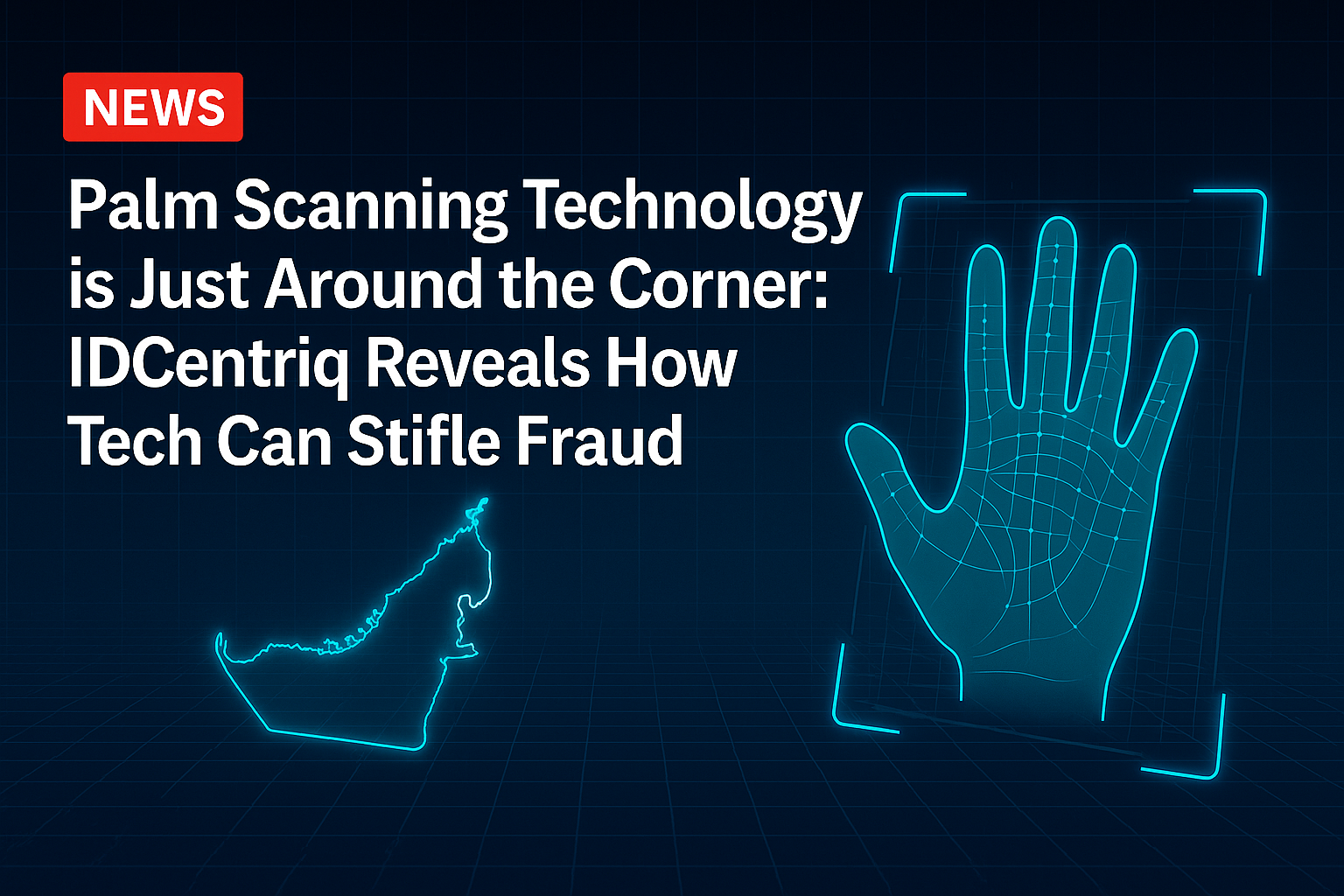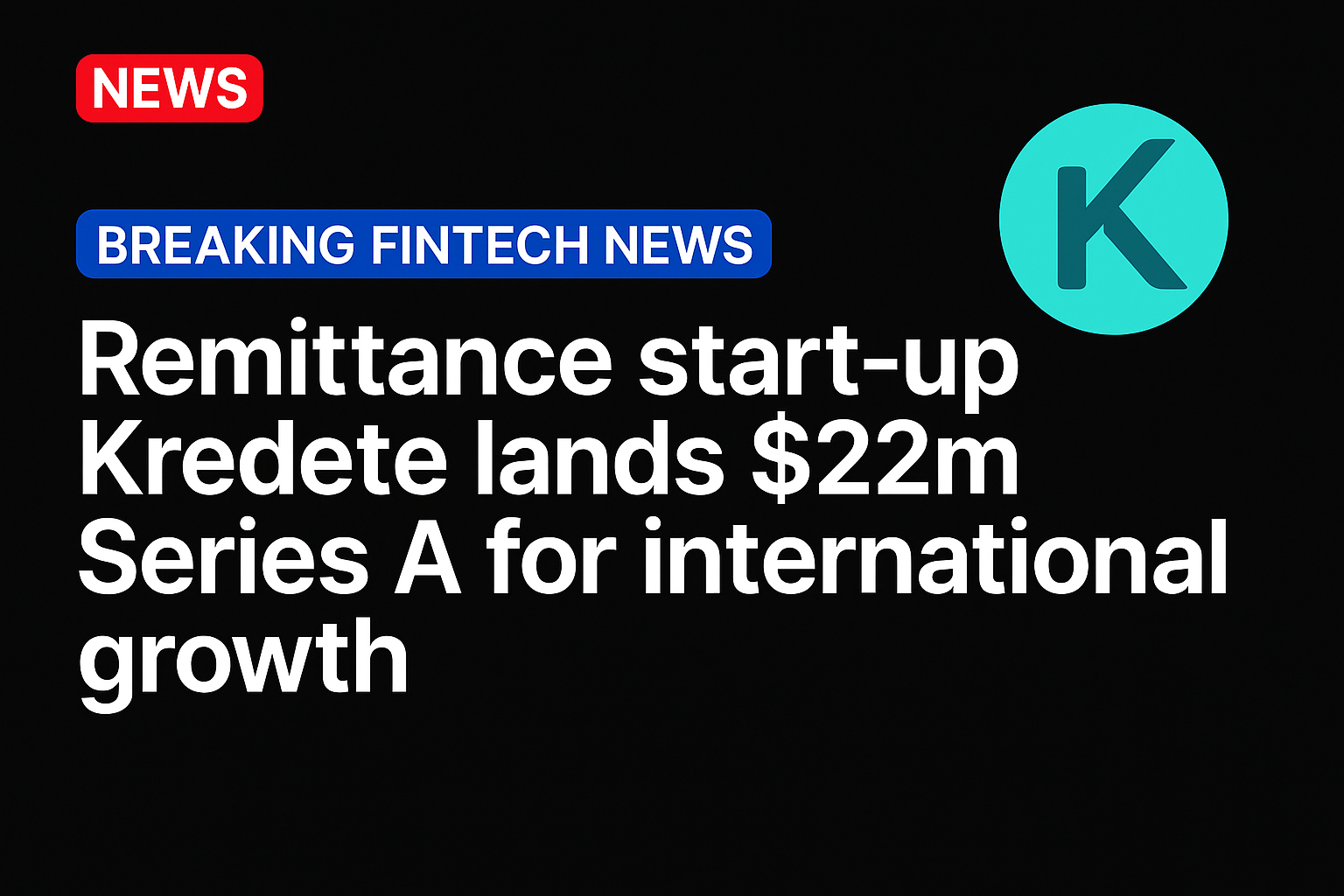Biometric security has long been viewed as one of the most secure ways of authenticating someone’s identity but in an age of rapidly developing AI which can create lifelike spoofs, the reliability of fingerprint and facial recognition technology is being called into question. Exploring the next evolutionary step of biometric tech, Corey Bowlby, chief product and technology officer for IDCentriq, the authentication and payment platform, introduces palm scanning technology.
In a conversation with Mark Walker, editorial director of The Fintech Times at Dubai Fintech Summit 2025, Bowlby explained how frightening the global fraud figures are and why it is crucial a new way of approaching verification is needed.
“In 2023, fraud costs globally were around $430billion, which in my opinion is a global crisis. We’re seeing a lot of new cybersecurity and authentication tools released, but they’re not solving the problem long term – they’re just dealing with it in its current state. The fraud threat is getting worse, but this is where palm scanning technology can help.”
Up until now, fingerprint and facial recognition security methods have had enough unique points of interest which enable the technology to correctly identify someone. However, as fraudsters evolve their attacks with artificially generated images, voices and more, these traditional security methods are not as reliable as they once were.
Bowlby pointed out that there are less than 200 uniquely identifiable points of interest in someone’s face. With populations of countries growing extremely rapidly, the security measure could misidentify someone with potentially five, 10 or even 20 other people. Some sort of security measure is needed which can look at more unique points of interest. Cue palm scanning technology.
Returning to the physical world
The evolution of technology has seen people become more and more distant from physically doing things themselves. There used to be physical keys and padlocks, which became digital codes you entered, which became fingerprint verification which then evolved into a method where all you had to do was look into a facial scanner to verify yourself. With IDCentriq’s palm scanning technology, users are taking a step back into the physical world again – where they can physically feel they are authorising something.
Linked to official government data, palm scanners look at vein patterns beneath the skin. While incredibly useful in-store to validate payments, or to validate your identity for something like an election, for the time being, people don’t have palm scanners in their houses. This does not mean the tech cannot be used at home though, as IDCentriq provides an omnichannel solution which taps into the data through an app.
Demonstrating the functionality, Bowlby said: “Every time you want to download an app to a device we do an ID verification. You have to show your government-issued documents and then we check these against government databases. The next step of verification comes in the form of a facial passive liveliness check, which is more secure than facial recognition from say something like Apple’s face ID check, which can have multiple people registered to it.
“This facial check once again looks at what is on a government database, and only at this point, does the app create a secret key on that device. We don’t know what the key is, but it doesn’t leave the device. When you then try to make a payment on the device, you have to use facial recognition to confirm it is you. This requires going back to our database and if the face is approved by our system, it will activate the secret key to authorise the transaction.”
Palm scanning adoption by region
Not every region or country is on the same wavelength when it comes to new payment terminal adoption. In the EU, there has been a huge adoption of contactless payments, while in Asia QR codes have become the go-to payment method.
After the pandemic, users were encouraged to use payment methods which did not involve physical contact. However, speed is the name of the game when it comes to payment preferences and according to Bowlby, this is where palm scanning can be more efficient than these other digital payment methods.
“It takes eight milliseconds to read a palm, and then we send a result within a second. This level of speed will greatly drive our adoption.”
Pairing this speed with the fact governments are already looking at new ways to evolve and implement biometric technology puts palm scanning in very good stead. Highlighting the Middle East and the UAE specifically, Bowlby explains how palm scanning is very close to mainstream adoption.
Citizens are already used to biometric technology as they carry around fingerprint scanners with their Emirates ID. “The leadership here understands that palm scanning will drive the vision they’re looking for. It will remove criminals’ ability to forge a fake silicon finger that is registered to a fake Emirates ID.
“We’ve spoken to a lot of banks that are eager to use our technology, but getting customers to break out of their old payment habits and adopt new ones will be challenging. However, if for example, the UAE government mandates the change, people will be forced to see how useful and efficient the technology can be.
“However, in terms of mainstream adoption, it’s hard to tell when that will happen just yet. Hopefully, people will see the benefit that potential trauma can be avoided as this is a more secure way to verify your identity. We need this message to be pushed out and understood by consumers in order for us to see high levels of adoption.”
Source: https://thefintechtimes.com/





